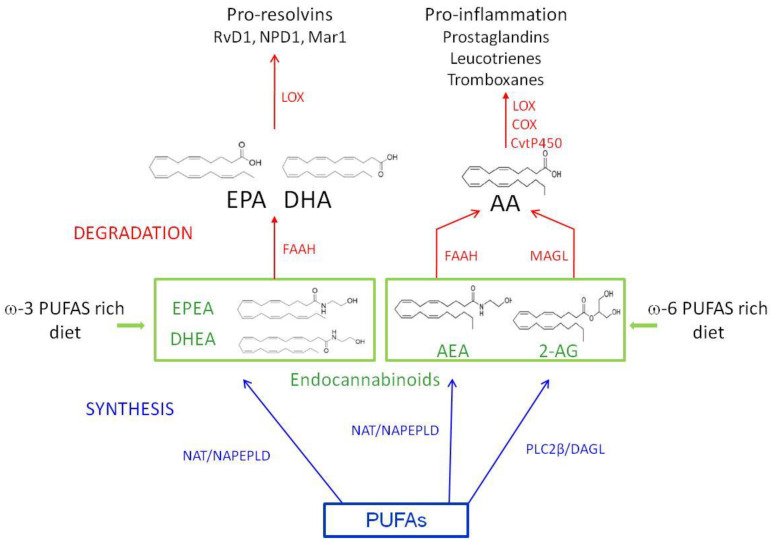Figure 2.
A schematic representation of the metabolic/hydrolyzing pathways linking ω-3 and ω-6, endocannabinoids, and inflammatory mediators. The syntheses of DHEA and EPEA, and AEA from ω-3 and ω-6 PUFAs respectively, requires the activity of N-acetyltransferase (NAT) followed by N-acyl phosphatidylethanolamine-specific phospholipase D (NAPEPLD). The synthesis of 2-AG from ω-6 PUFAs requires the subsequent activity of phospholipase Cβ (PLCâ) and diacylglycerol lipase (DAGL). The hydrolysis of the endocannabinoids requires the activity of the fatty acid amide hydrolase (FAAH) and monoacylglycerol lipase (MAGL). The activity of lipoxygenases (LOX), cyclooxygenase (COX), and cytochrome P450 enzymes (CyP450) drives the production of inflammation mediators. AA: arachidonic acid; AEA: anandamide; 2-AG: 2-arachinonoylglycerol; DHA: docosahexaenoic acid; DHEA: N-docosahexaenoyl ethanolamine; EPA: eicosapentaenoic acid; EPEA: N-eicosapentanoyl ethanolamine; Mar1: maresin 1; NPD1: neuroprotectin D1; PUFA: polyunsaturated fatty acid; RvD1: resolvin D1.

